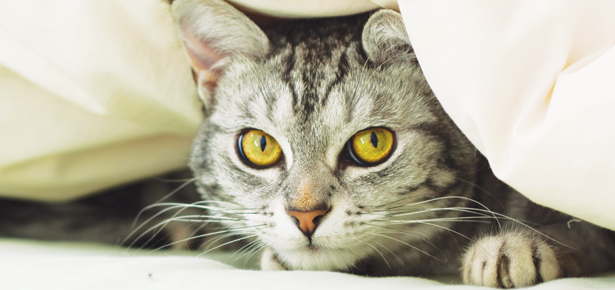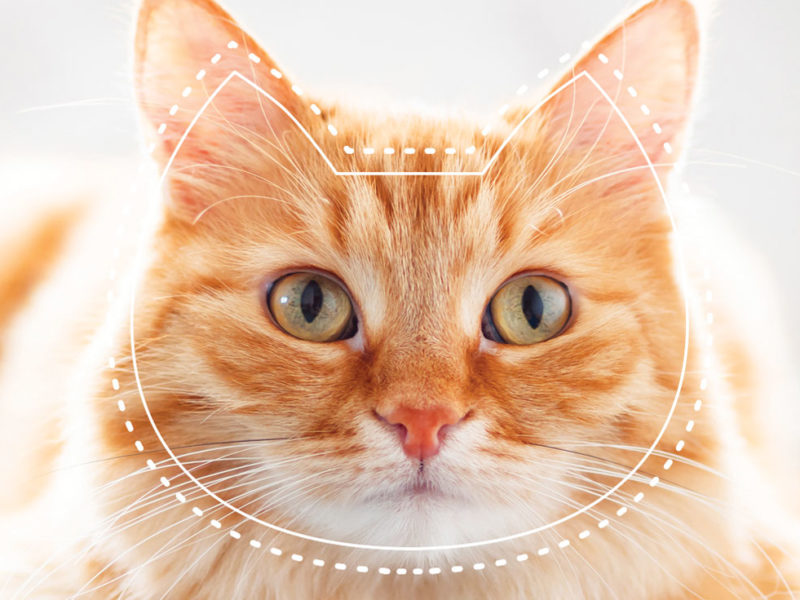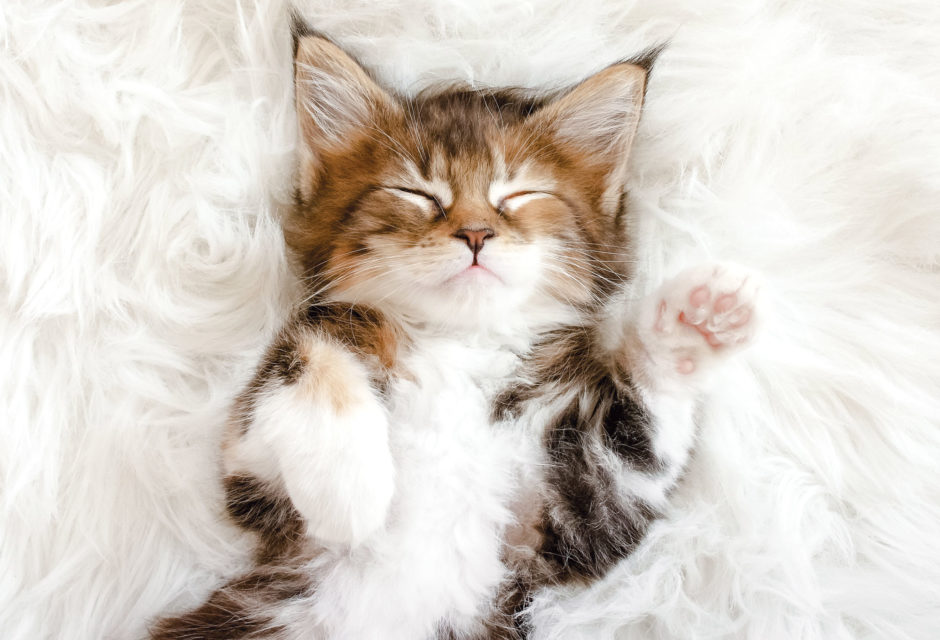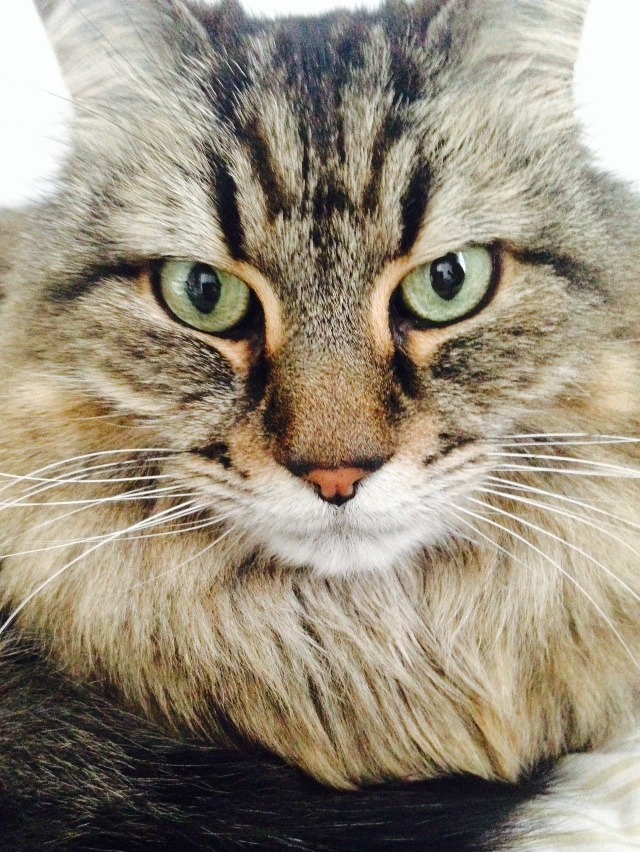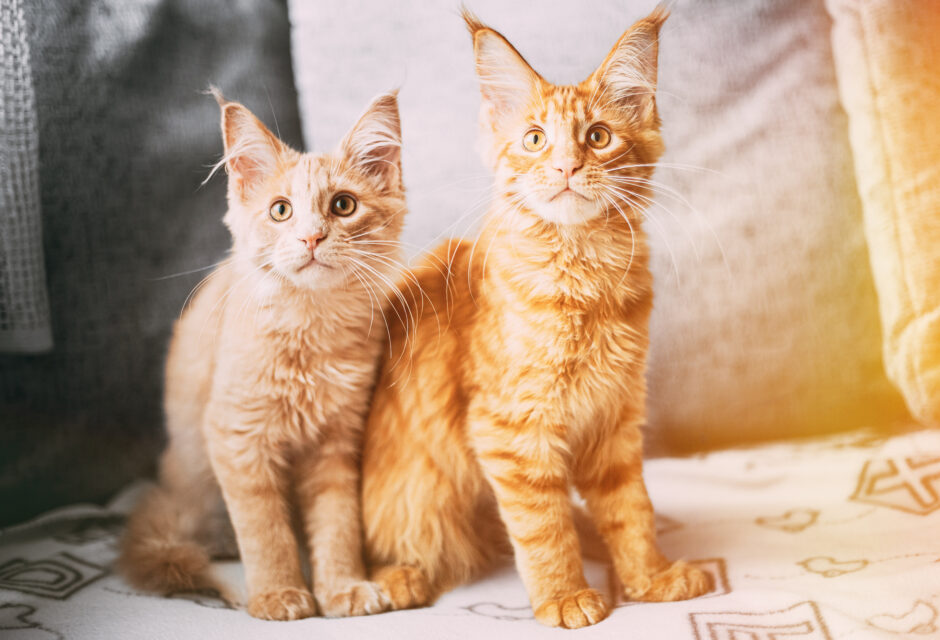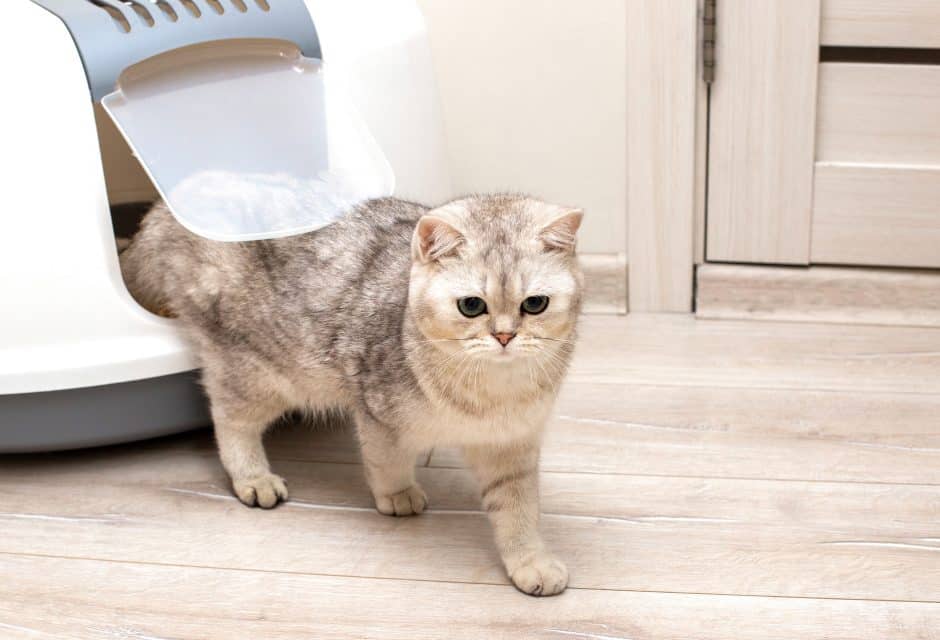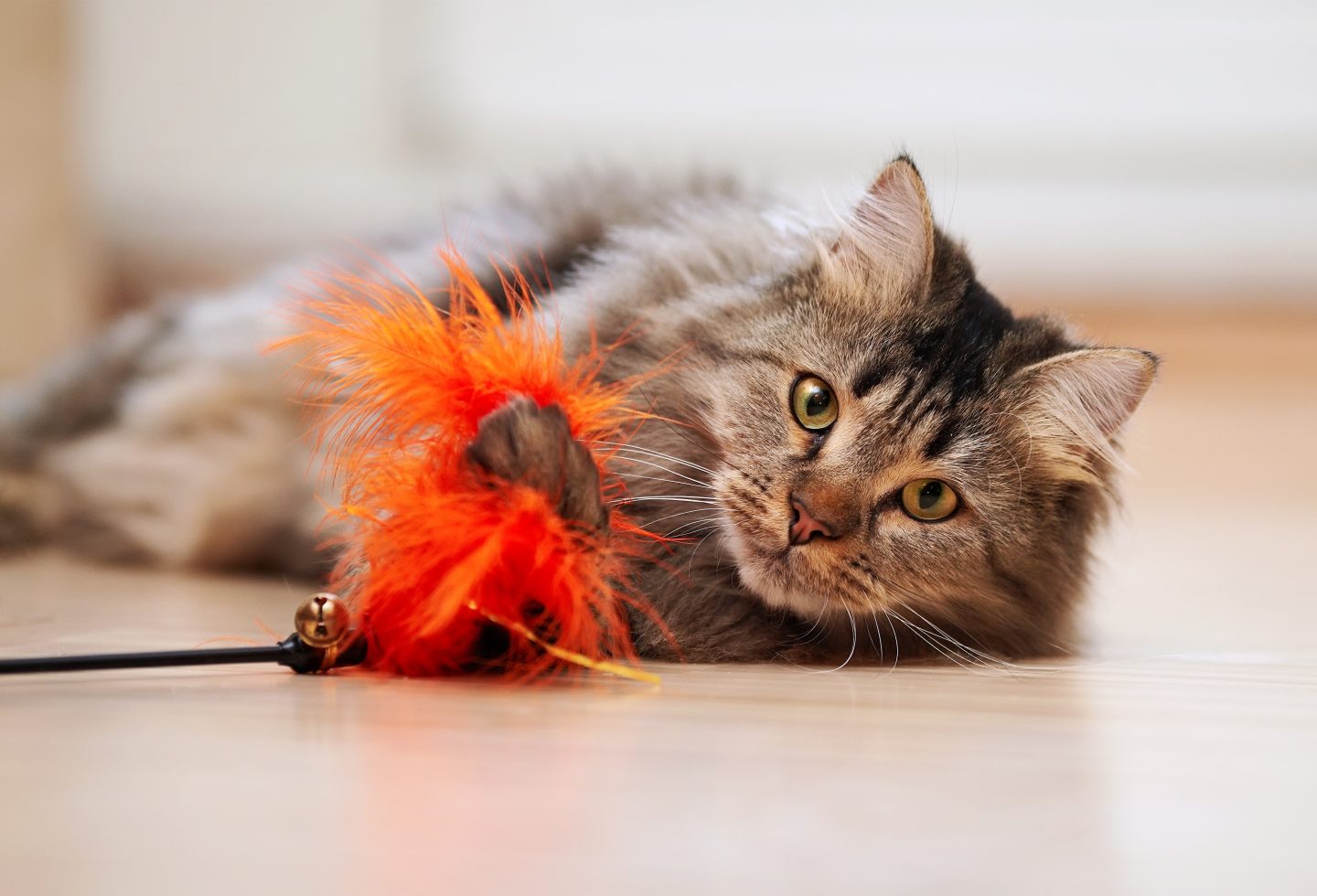
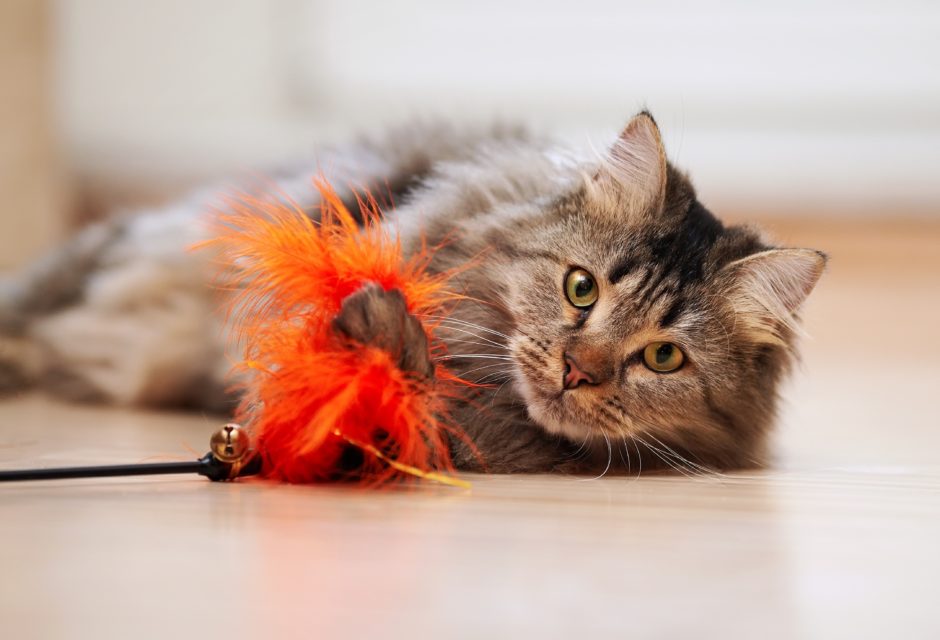
How to Get My Cat to Play
Have you been looking for tips on “how to get my cat to play”? All cats should have the opportunity to play. It’s not just about getting exercise – it’s about how good playtime is mentally and emotionally for your pet. Kitty playtime releases endorphins in the brain and helps build confidence and feelings of well-being.
If your cat isn’t showing any interest in playtime, here are ten tips to help you spark that play drive again.
Expert Tips on How To Get My Cat to Play:
#1 Address Any Medical Issues
Your cat may be in pain or may not feel well and that can certainly affect a desire to play. Have your cat checked by the veterinarian to rule out any underlying medical issue. Cats are good at hiding signs of pain and illness, so an exam is needed, even your cat doesn’t appear outwardly sick.
#2 Transition Your Cat to Scheduled Meals
In a free-roaming environment, cats work for their food. Cats are born to seek and discover their meals but in so many cases, especially with indoor-only cats, there’s a never-ending mountain of food readily available. Try making a transition to scheduled meals if you’re currently free-feeding.
#3 Choose the Right Kind of Toys
Cats can have preferences. Do some cat toy testing to find the right one. Texture, size, shape, and sound can make a difference in whether it’s a hit or a miss. For example, one cat may prefer a toy with a soft texture while another may prefer a hard plastic toy that rolls on the floor more easily. Size can make a difference as well. A timid cat may prefer a smaller toy. If a toy is too large, instead of resembling prey, it may look more like an opponent.
#4 Create a Safe Playtime Environment
To focus on playtime, a cat needs to feel safe. If you have a multicat household where there’s tension, or if other cats tend to dominant playtime, then your reluctant cat needs to be in a safe, quiet place so she doesn’t have to worry about being surprised or threatened.
#5 Set the Stage
Cats hunt by being stealthy so they don’t alert potential prey. Place open paper bags, boxes, or use cat tunnels in the room to create concealment. If your cat is timid or afraid, being able to hide will also help her feel more at ease.
#6 Be a Part of the Game
Interactive playtime is powerful. It’s a wonderful way to control the actions of the toy so your cat can focus on being a hunter. Use a fishing pole-type toy so there’s a distance between your hands and your cat’s teeth. This will allow her to fully engage and yet not have to worry about getting too close to you. Pay attention to how you move the toy. It’s often when the prey is not moving or distracted that the cat can silently advance to get to that perfect pounce position. Cats are ambush predators. They depend on stealth to move closer before they pounce. Your playtime technique should include movement as well as moments of stillness to give your cat time to plan. Movements across or away from your cat’s visual field are what will spark prey drive. Don’t move the toy toward your cat or it changes from prey to opponent. No self-respecting prey willingly heads toward the hunter.
#7 Solo Playtime Basics
Don’t leave fuzzy mice and other solo toys around in a basket or in a pile on the floor. Instead, strategically place them to create curiosity. Open a paper bag, place it on its side and then stick a fuzzy mouse in there. Place a ping pong ball in an open cardboard box. Put toys under furniture so that just a portion sticks out – almost as if the mouse is heading under the sofa to hide and only his tail is left exposed.
#8 Get a Little Help from Catnip
Not all cats react to catnip, but if yours does, use it every week to ignite a little playtime. You can “marinate” toys in catnip and then bring one or two out for a play session or just sprinkle some catnip on the floor for your cat to lick, eat and smell. Choose a good quality catnip and offer it no more than twice a week. If catnip is left out all the time, cats can become immune to its effects.
#9 Introduce Puzzle Feeders
These are a great way for a cat to “work” for food in the form of playtime. Puzzle feeders come in all shapes, types, and levels of difficulty. Whether you feed dry food or wet food, you can create a puzzle feeder. The basic concept is that the cat must manipulate the toy in some way to receive the food reward. You can start with something as basic as cutting holes in a dry water bottle and placing some treats or dry food in there. As the cat rolls the bottle around, food periodically falls out. Search online for puzzle feeders for cats and you’ll see many types to choose from as well as for instructions for creating homemade ones. We love the Indoor Hunting Feeder from Doc and Phoebe’s Cat Co.
#10 Watch a Video Together
Play a YouTube video that showcases prey before an interactive play session. Not all cats react to watching videos, but many get very excited when they hear the squeak of a mouse and then see it skittering back and forth on the screen. It can be a helpful way to kickstart playtime.
Don’t Give Up
Don’t force the issue and make sure you give your cat space, but don’t give up on finding the right type of toy and the right play technique to win your cat over. Even if your cat stays hidden under the bed but she reaches out with her paw to touch the toy, you’re making progress. Every cat should experience the joy of playtime.
With these tips on “how to get my cat to play” from cat behavioral expert Pam Johnson-Bennett, your cat will look forward to playtime.
Pam Johnson-Bennett
Certified Cat Behavior Consultant & Best-Selling Author
Pam Johnson-Bennett is a certified cat behavior consultant and best-selling author of 8 books on cat behavior. She starred in the Animal Planet series Psycho Kitty, seen in Canada and the UK. She was a vice president of the International Association of Animal Behavior Consultants and founded their cat division. She has served on an advisory board for the American Humane Association as well as other animal welfare organizations.
Pam is considered a pioneer in the field of cat behavior consulting, having started her career in 1982. Some of her books have been used as textbooks for behavior courses and she has influenced many practicing in the field today. Her book, Think Like a Cat, has been referred to as the cat bible.
Pam owns Cat Behavior Associates, located in Tennessee. She lives with her husband, two children, a rescued cat, and a rescued dog.
Join the newsletter and never miss out on cat content again!
"*" indicates required fields
By clicking the arrow, you agree to our web Terms of Use and Privacy & Cookie Policy. Easy unsubscribe links are provided in every email.






